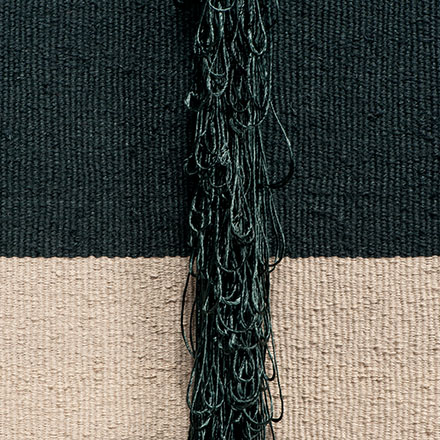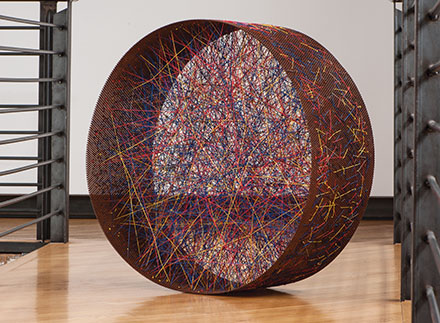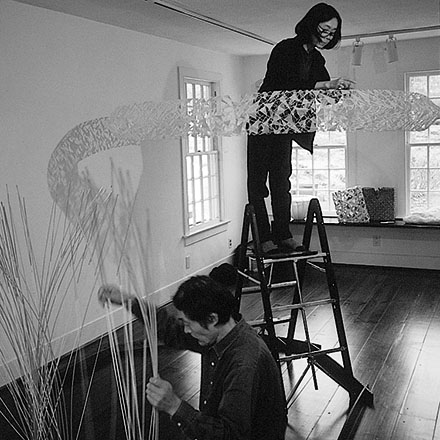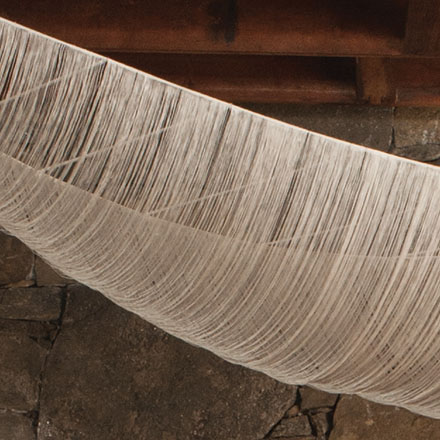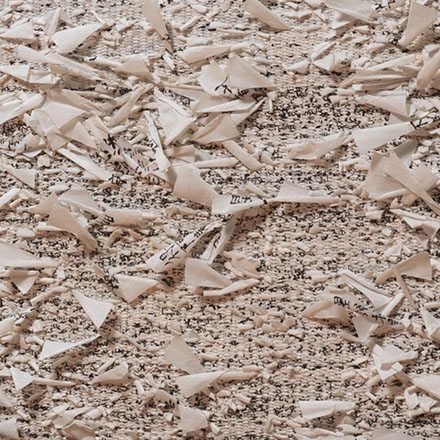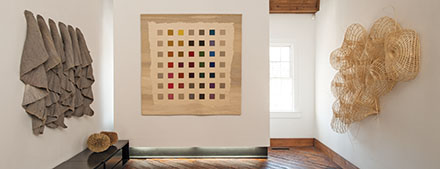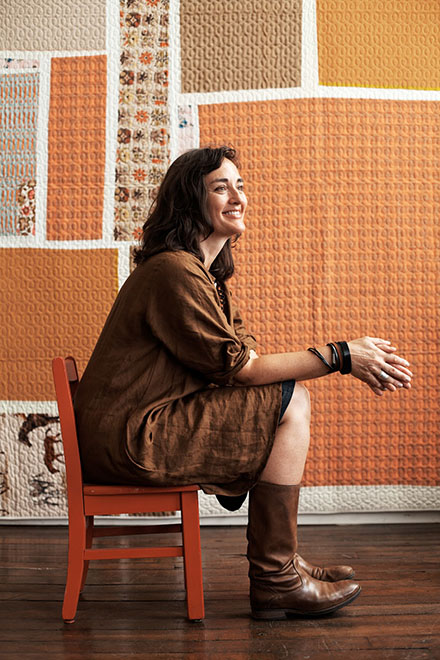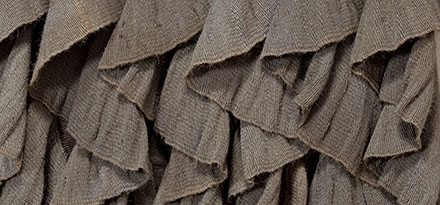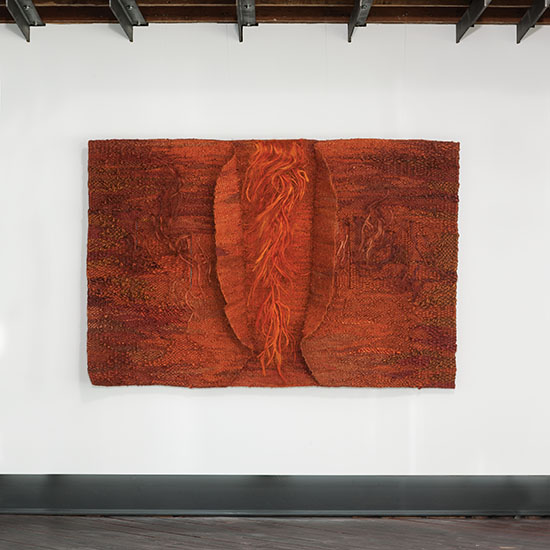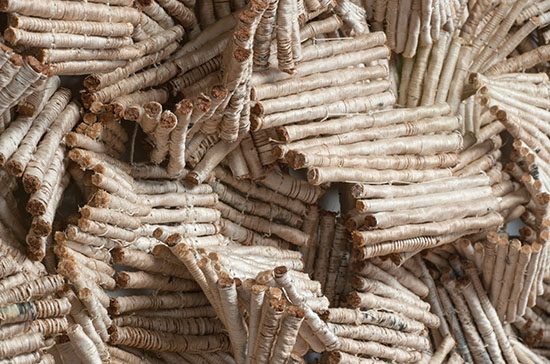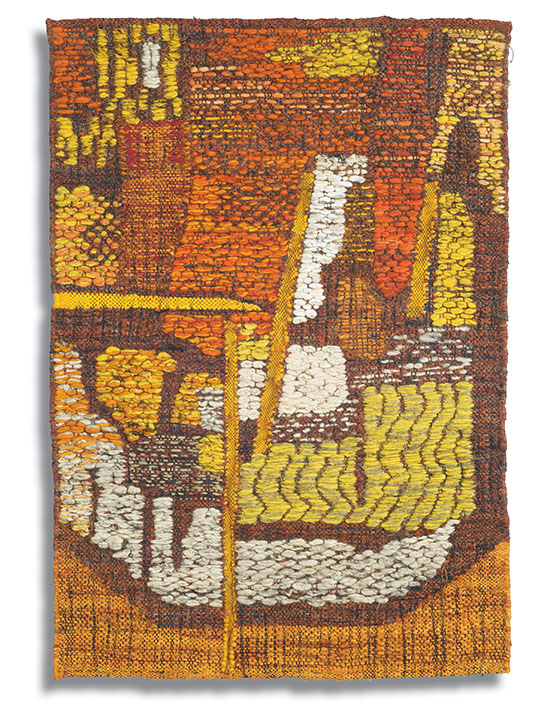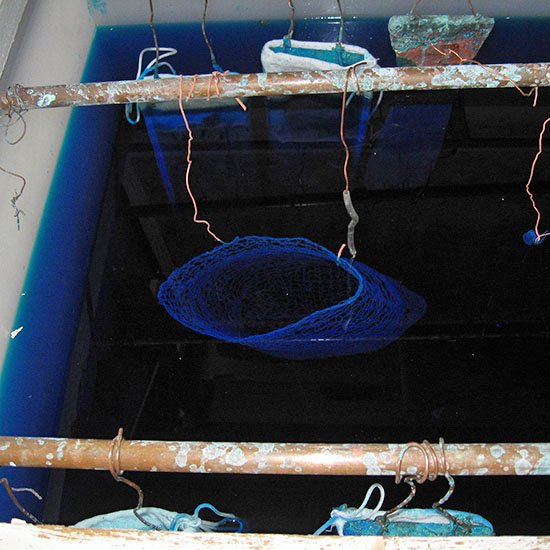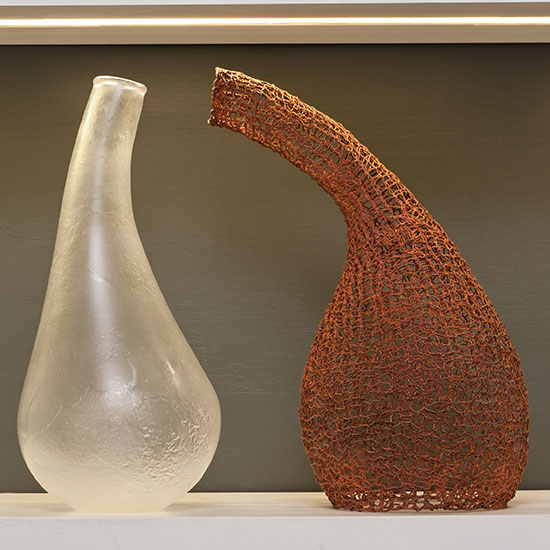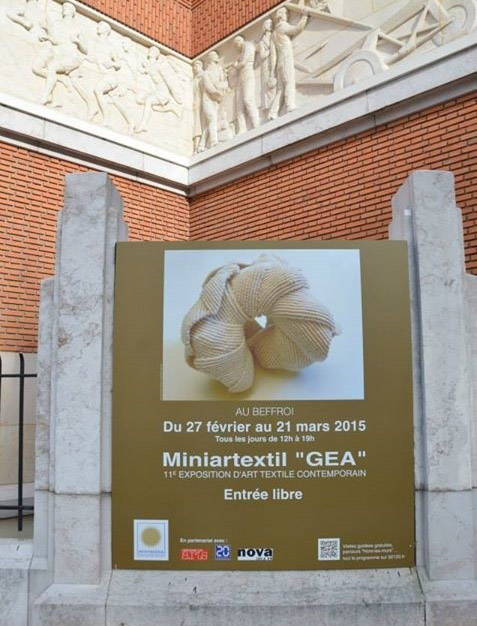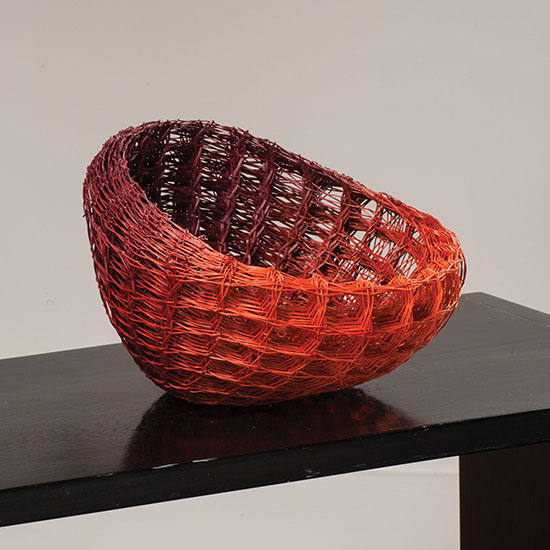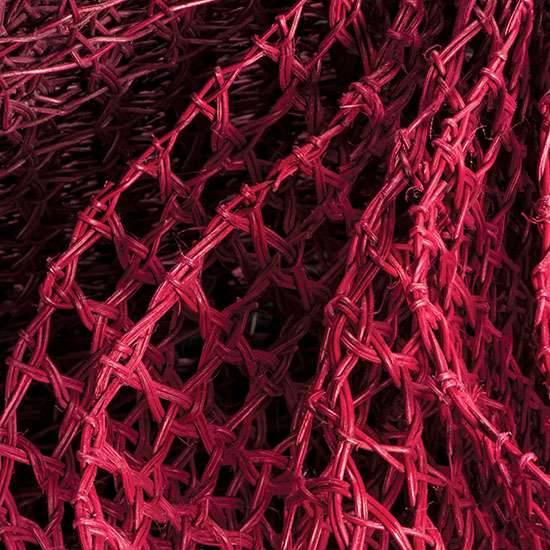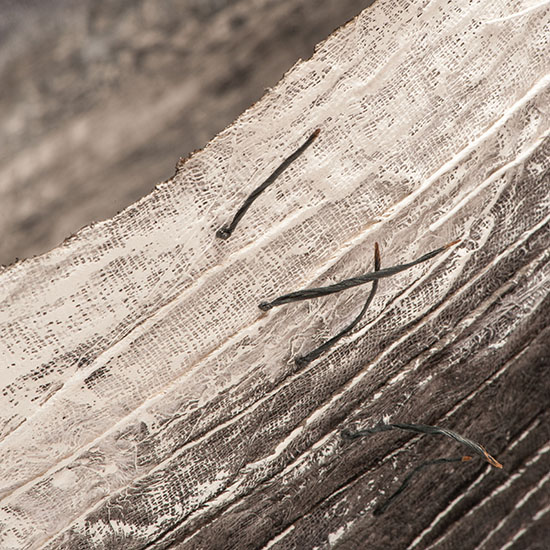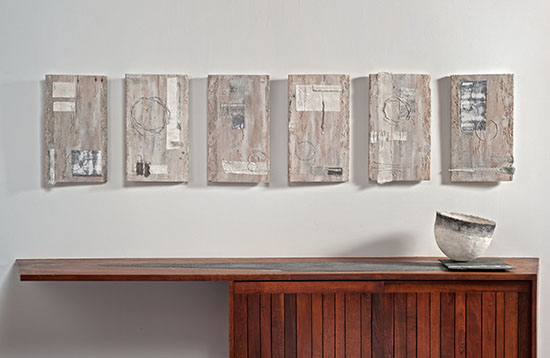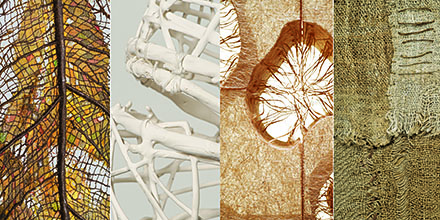
Details of works by Anda Klancic, Stephanie Jacques, Naoko Serino, Susie Gillespie, photos by Tom Grotta
This April’s exhibition at browngrotta arts, includes 15 artists whose work we believe shows the experimental approach to materials and methods that characterized the fiber art movement in its early days, in the the 1960s. Six of these 15, Anda Klancic, Stéphanie Jacques, Naoko Serino, Susie Gillespie, Carolina Yrarrázaval and Randy Walker are not new to browngrotta arts, but they do epitomize an approach that deftly combines exploration and technical mastery. Anda Klancic of Slovenia for example, has won awards and holds patent on the techniques she has developed to create lace-like works using a sewing machine. Naoko Serino of Japan blows air into jute to create surprisingly luminous, magical forms. Stéphanie Jacques of Belgium is an innovative sculptor in willow and clay, who also uses photography, video and performance to explore larger questions of identity. As one observer wrote “watch her voids and shadows carefully as they are rich with meaning.” Susie Gillespie of the UK combines natural materials, including hand-spun nettle, with a novel mix of techniques, broken borders, insets and slits and twining, to create works with a sense of earth, stone, vegetation and decomposition, that
appear old, yet feel new. Throughout her career, Carolina Yrarrázaval of Chile has investigated and adapted traditional textile techniques from diverse cultures, especially Pre-Columbian techniques. Her highly accomplished, abstract weavings are austere and sensual at the the same time. American artist, Randy Walker, takes an architectural approach, creating interesting and elegant constructions that use fine threads, cords and ropes to re-envision humble found objects.
Recent works by this diverse group of artists will be featured in Influence and Evolution, Fiber sculpture…then and now, at browngrotta arts, 276 Ridgefield Road, Wilton, Connecticut from April 24th – May 3rd. The Artists Reception and Opening is on Saturday April 25th, 1pm to 6pm. The hours for Sunday April 27th through May 3rd are 10am to 5pm. To make an appointment earlier than 10am or later than 5pm, call: 203-834-0623.

